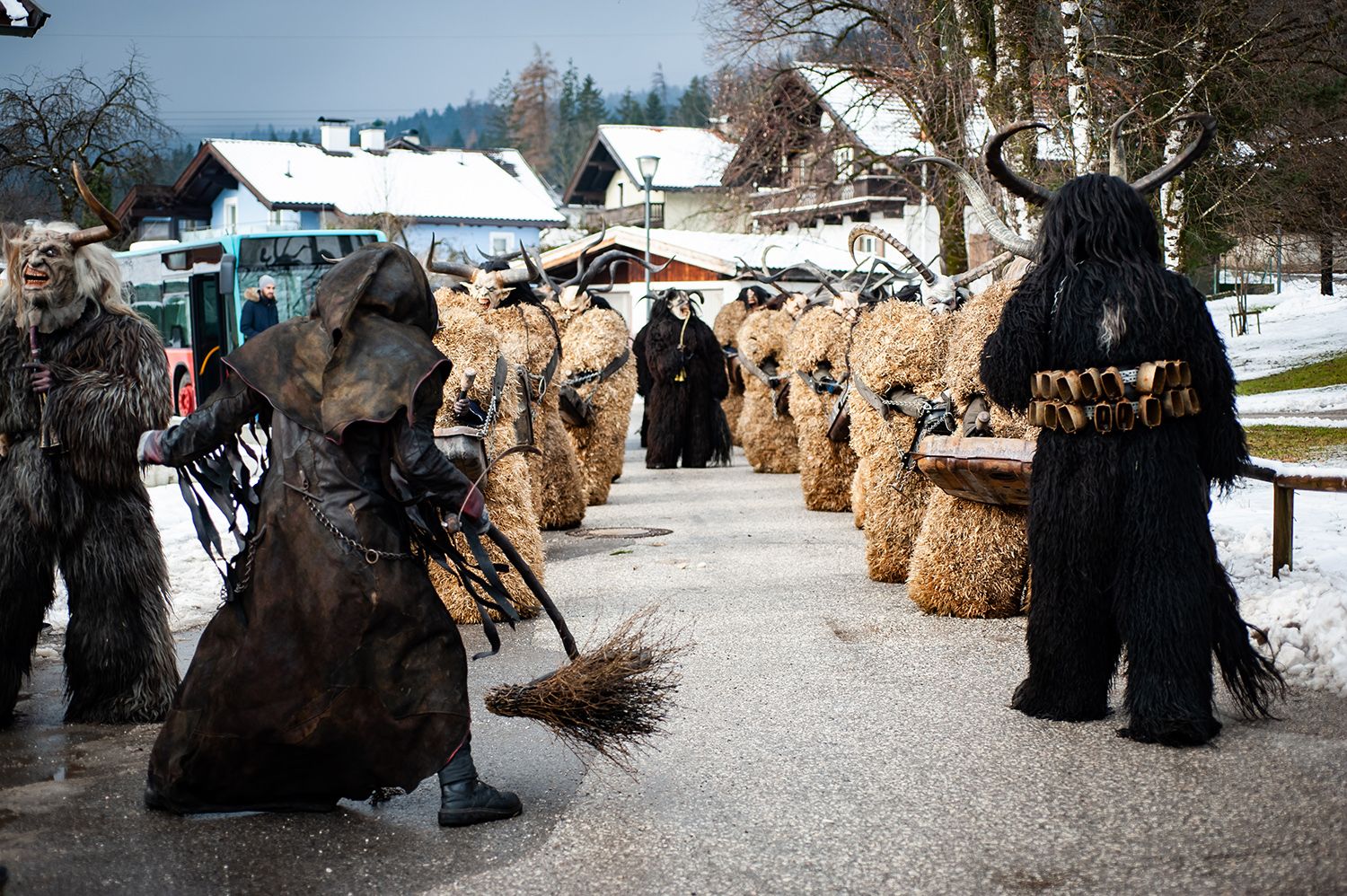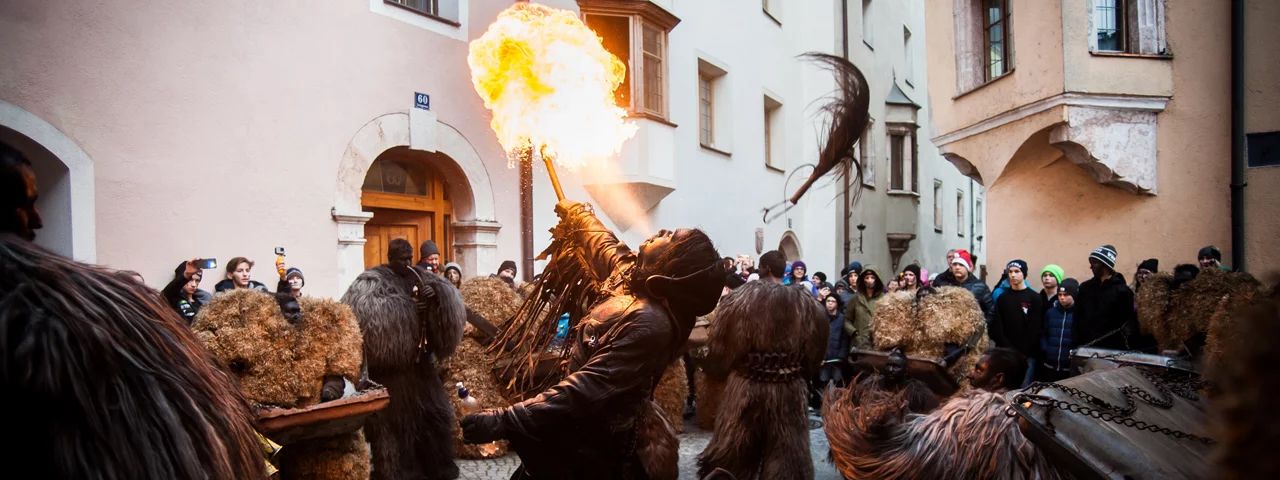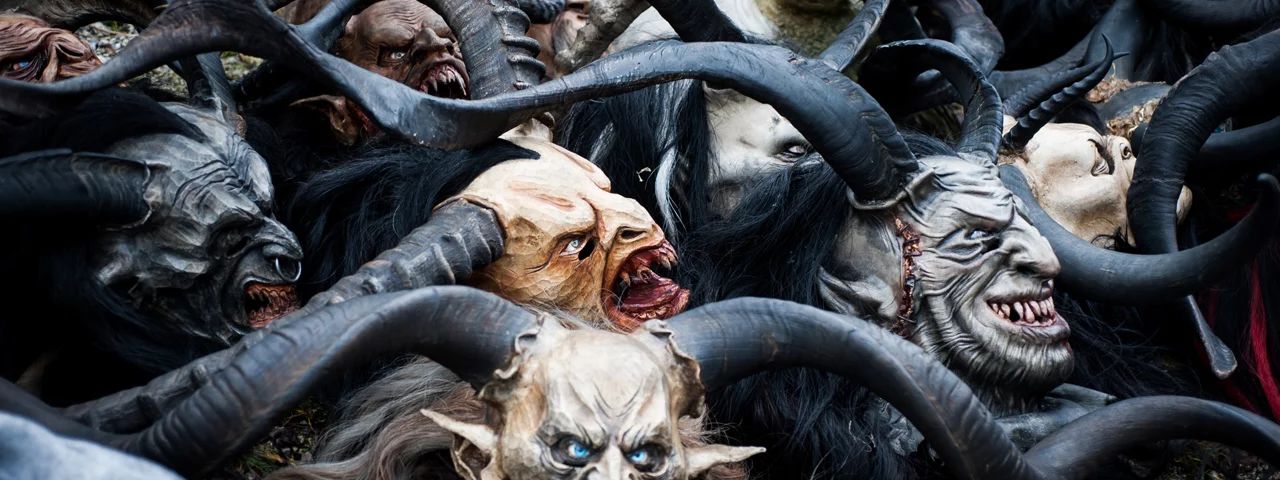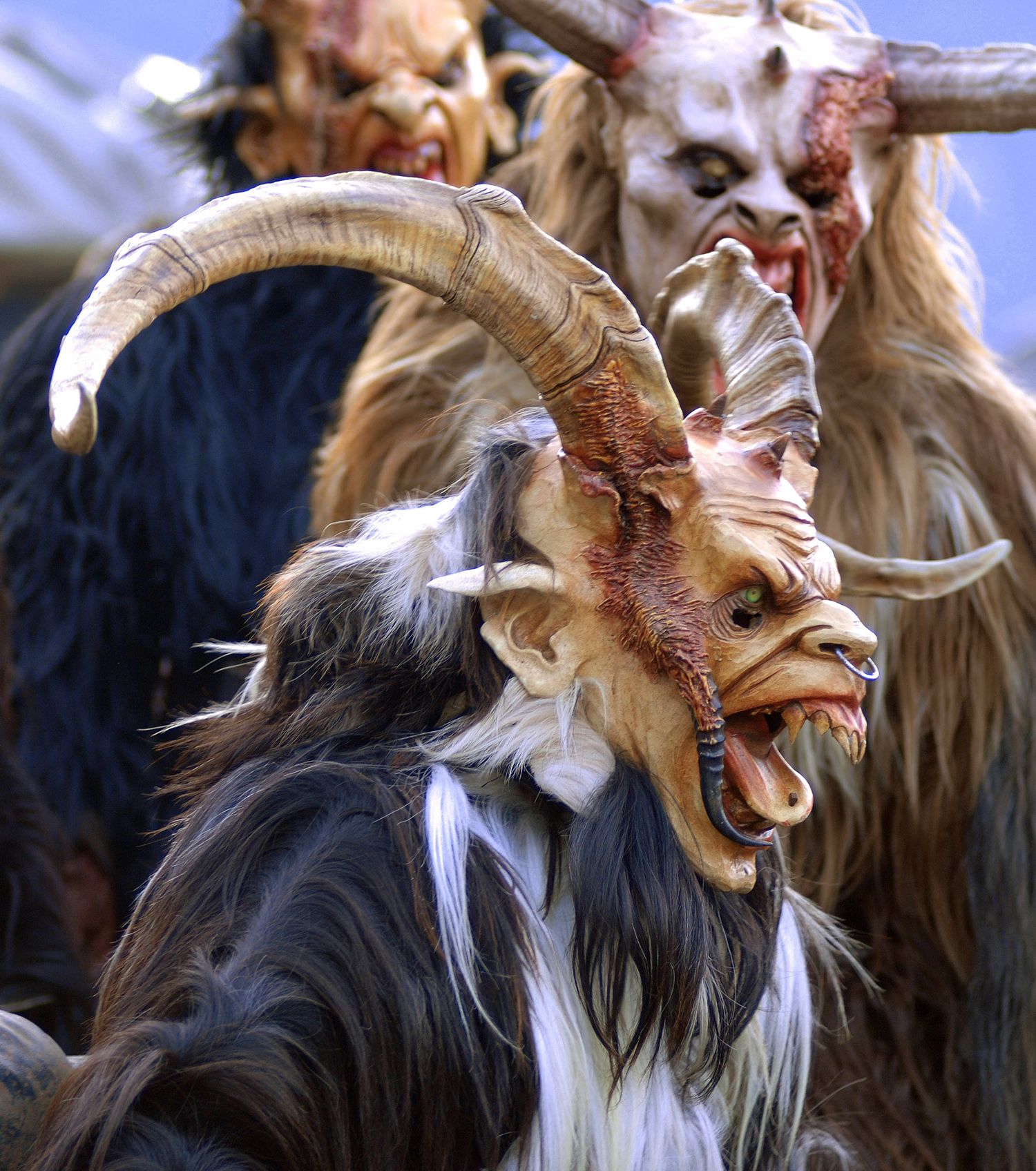Krampus has a long tradition in Tyrol. The Krampus is the wild companion of St Nicholas and, according to tradition, is supposed to punish bad children. In some regions, the figure of Krampus has merged with that of the "Percht". In Tyrol, the performances of the Krampus, Tuifl and Perchten are very popular. During parades and Krampus runs, the traditional groups parade noisily through the streets with their costumes and elaborately carved wooden masks - an exciting spectacle for the onlookers.









